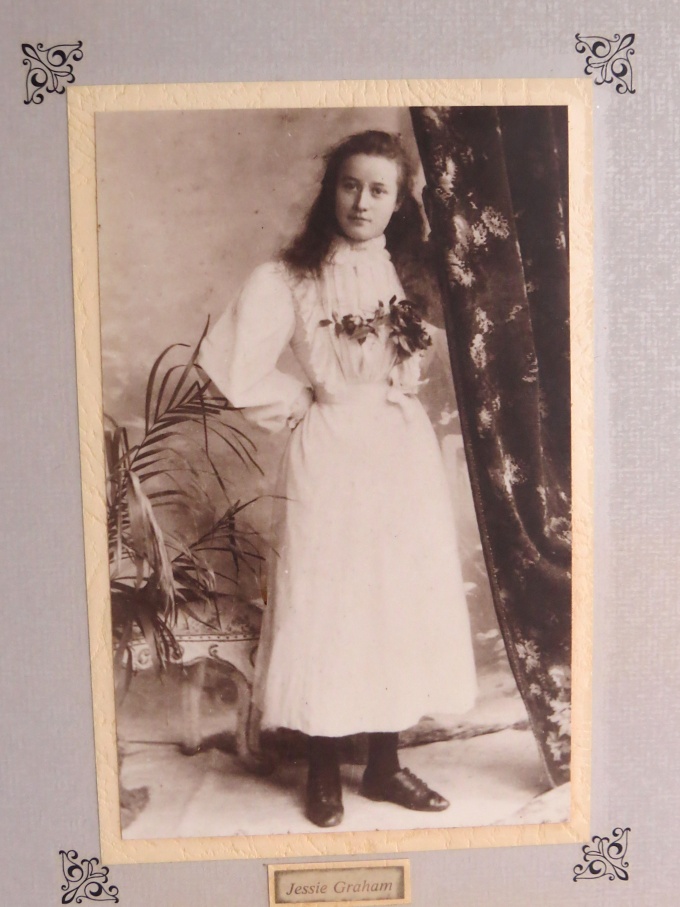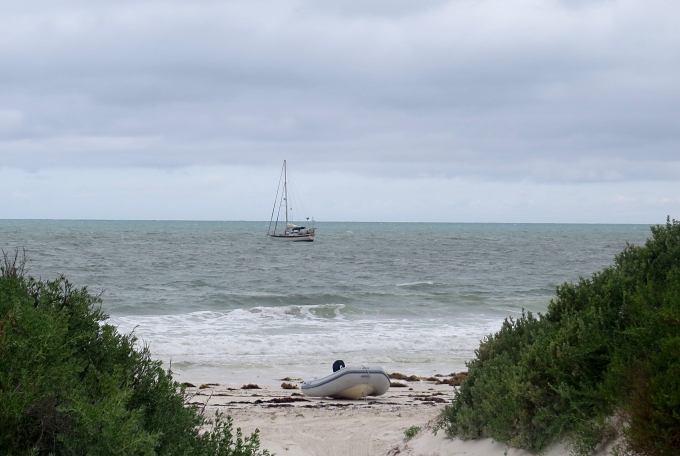Visiting the Eyre Bird Observatory
/… and getting back again
In 1977, Birds Australia established the Eyre Bird Observatory in the remains of the first Eyre Telegraph Station, a repeater station built in 1877, and replaced by the current limestone building in 1897. Beyond the birding aspects of The Observatory, there's a small museum in the house that features “a display commemorating the role the Telegraph Station had in establishing national communications in Australia along with Inter-Colonial Telegraph Line.” Kirsty gave us an introduction and then turned us loose to have a look around.
The tiny, one-room museum had lots of telegraph memorabilia as well as specimens and skeletons of the flora and fauna found in the area. However, it was the information provided about the Graham family that lived and operated the telegraph station from 1877 for ~20 years that intrigued us. In particular, the poignant narrative of Jessie Graham, second youngest of the eleven children of William “Iron Man” Graham, the first station master, had us captivated.
Here's one of her stories …
“In our house, there were no girls”, she said. “There were no children. Only workers.”
She recounted that at age five, she was sent off with her seven-year-old brother to tend horses several kilometers away from home and it turned into a nightmare. At night, the dingoes came around and they were terrified. The two children climbed to the roof of a small shed and huddled under a blanket there throughout the night, trembling. They had, however, forgotten to bring the saddle up with them and the dingoes, attracted by the mutton fat and emu oil used to treat the leather, tore it to shreds. When the two returned home the next day, Jessie was blamed for her carelessness and irresponsibility and beaten so thoroughly that she bore the scars on her ribs, both physically and emotionally, till she died. How's that for a hard, heart-wrenching, pioneering story and an SOB of a father?
At Kirsty's suggestion, we chose to the 45-minute circular Rope Walk, easily followed by the rope laid along the side of the trail (duh!). Kirsty also supplied us with a guidebook that described the flora, potential fauna and the historical aspects we'd see along the way, including the chimneys from the original 1877 telegraph station.
Though we heard birds, we saw few and except for a giant ant with huge, menacing front pincers, we saw no other animals though we're told that feral camels sometimes visit the area.
As we walked, we felt protected by the huge dunes on the seaward side, but when the breezes became a bit brisk, we began worrying about the boat and returned to the station to say our farewells. We would have enjoyed several more of the illustrated walks in the area, but a brief visit was definitely better than no visit at all and we headed back along the sandy trail to a waiting Cups.
Getting back to the boat was no trivial affair. The wind was up and with it, the surge. We dragged the dinghy into the water, keeping it straight as waves broke. When we were knee deep, we timed the waves and when there appeared a short respite, I jumped into the bow and began paddling like mad and with a shove, David jumped in over the stern, losing his shoes and taking up a paddle in one swift motion. We thought we were good and David stopped paddling to start the engine. A wave larger than the rest caught us, pooped the dinghy, and turned us broadside to the next wave which carried us with some alacrity back to the shore. So, the process repeated and on the third try, we made it beyond the breakers and were on our way, rather tumultuously, back to Cups. We were wet through and through, dripping and totally bedraggled. Ah, but the saga did not end there.
Tying up the dinghy with the waves thrashing took two of us. Clambering aboard Cups from the jerking dinghy was not a graceful affair and still we had to haul the engine and get the dinghy aboard. David always takes the precaution of fastening a line to the engine and securing it to the boat, so we don't lose it overboard. It's never happened, but you never know. Especially in bouncy situations, I hold the line taut as he's loosening the engine bolts that secure it to the dinghy. Quicker than you can say, “Yikes, the engine's heading for the drink”, I was wrestling to keep hold of a 50# (22kg) engine blowing in the breeze after it came loose from the dink. It dangled ever so closely to submersion level. David was up in a flash, hauled the engine and had it back in its mount and secure before any damage was done. Thank, Neptune.
Now, it was time to haul the dinghy, always a challenge when the wind is up. In days past, I slowly winched up the 165# (75kg) dinghy while David manhandled it into position and tried to keep it from beating up the boat or itself on its way up. With the new system David has devised, we use the windlass and a pulley system which gets it on board in a matter of a couple minutes. I'm pleased to report the dinghy was stowed in its place on the foredeck with no mishaps and only a few bruises.
All chores complete, we were relieved to find that Cups was weathering the waves like a trooper. She was pitching a bit, but all in all, especially compared to the dinghy ride, she was quite comfortable and holding tight on her anchor. Warm, dry clothes and a hot cuppa made everything okay.
A fine walk ashore, some new friends, an exhilarating ride back to Cups … quite honestly, a pretty good day. As for the birds, well, they seem to have eluded us. Reason to return by land at some point?
Tomorrow, the weather looks good for heading to Daw Island, part of the Eastern Group at the western end of our Great Australian Bight crossing. I've just made a kettle of Lemay Special for our passage soup and there'll be warm carrot cake muffins to have with your tea or coffee. Care to come along?








